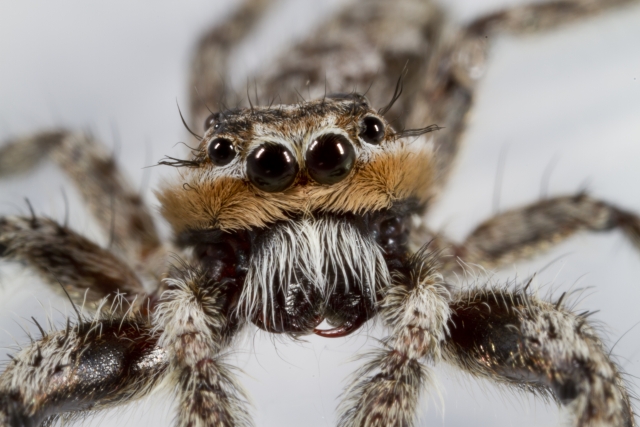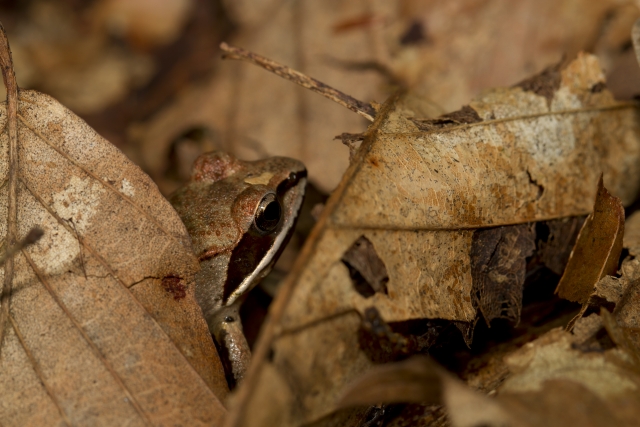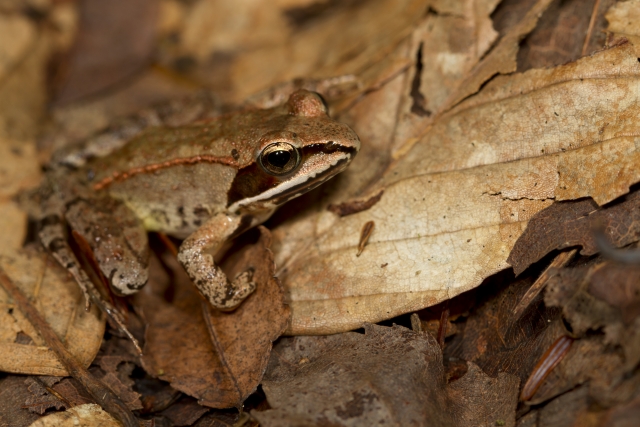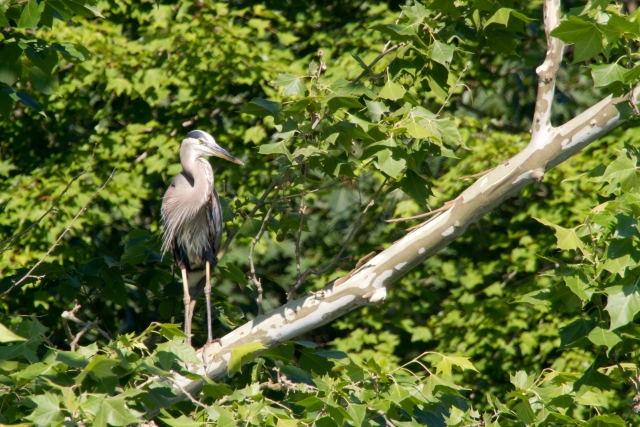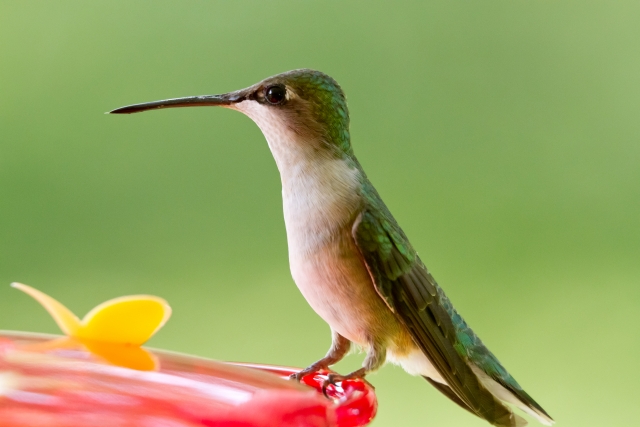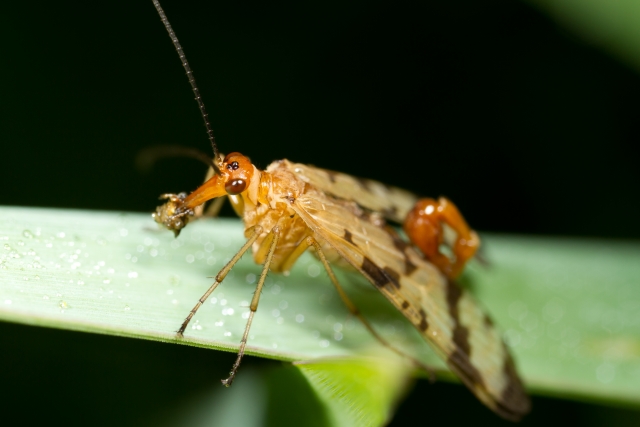Balloon Glow: Composite
ktuli — Tue, 09/09/2014 - 20:49
Ok - I know I promised this literally months ago, but I finally got around to creating a composite image from the New Castle 2014 Balloon Quest. I've included the four images I used to create the composite below - I'm bummed that I never got any shots of that fifth balloon lit up, but it really never did!
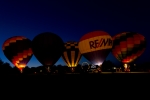 Composite |
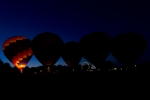 Image 1 |
 Image 2 |
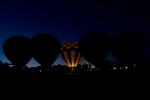 Image 3 |
 Image 4 |
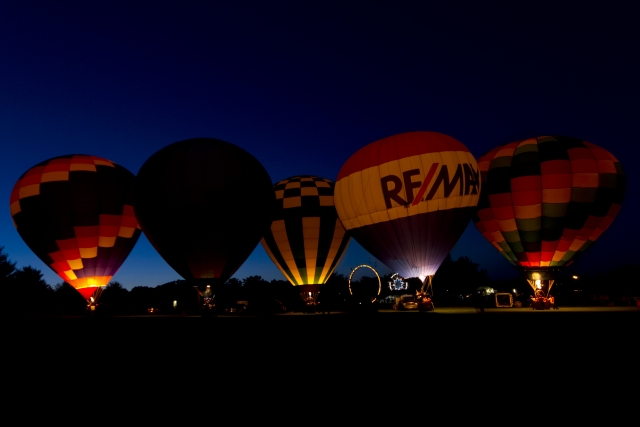 |
||||
Technical Data: Canon EOS 7D, Sigma 10-20mm f/4-5.6 EX DC HSM AF at 11mm, 1/25 sec at f/5. ISO 800. Raw conversion Adobe Camera Raw, Composite image built in Photoshop CS5.
This technique is really useful. It can be tricky - especially when your subjects are moving (as these balloons were). I'm sure if you started looking really closely as a fullsize version of this composite, you could find the lines where I blended things together, but for a smaller view like this, it works well enough. I may have to see what I can do about taking some screenshots and writing up a bit of a tutorial on how I do this kind of composite.
- Bill
Fangs for Stopping By!
ktuli — Tue, 09/09/2014 - 06:35
Hahah! I can't believe I haven't used that yet...
Technical Data: Canon EOS 7D, Canon MP-E 65mm f/2.8 1-5x Macro, 1/250 sec at f/16. Canon Macro Twin Lite MT-24EX in ETTL mode. ISO 100. RAW processing in Adobe Camera Raw.
- Bill
Shrooms!
ktuli — Sun, 09/07/2014 - 18:22
As promised, here's the mushroom assortment. No clue if any of these are edible or toxic but they certainly look interesting.
 |
||||
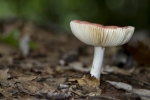 |
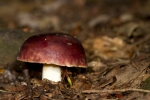 |
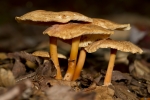 |
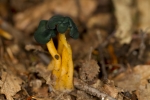 |
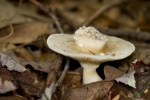 |
Thanks for stopping by.
- Bill
Subtle Camouflage
ktuli — Thu, 09/04/2014 - 10:18
So we'll stick with the frogs for today... Anya spotted this little fella when we were out for a nice little nature walk for her birthday last week. I am really impressed with just how simple yet effective his camouflage is. That simple dark stripe along the head really allows him to sit among leaves on the forest floor and almost disappear.
Technical Data: Canon EOS 7D, Canon EF 100mm f/2.8L Macro IS USM, 1/25th sec at f/8. Canon Macro Twin Lite MT-24EX in ETTL mode. ISO 100. RAW processing in Adobe Camera Raw.
Even without leaves on top of him, you can see how well he can blend in...
Technical Data: Canon EOS 7D, Canon EF 100mm f/2.8L Macro IS USM, 1/25th sec at f/8. Canon Macro Twin Lite MT-24EX in ETTL mode. ISO 100. RAW processing in Adobe Camera Raw.
The other thing that I saw a ton of during this hike was mushrooms, so we'll get to those soon.
Stay tuned.
- Bill
Hanging in there...
ktuli — Fri, 08/29/2014 - 07:07
Ok - I know I've been AWOL for like a month. I still have to process all the hundreds of photos from the Balloon Quest, and I've acquired a few other sets of photos that still need to be processed. We've had a ton of stuff going on here - most of which included construction/demolition work that resulted in being absolutely filthy and exhausted. Additionally, I purchased a new PC and was in the process of getting it setup to be the new photo processing machine. Since the construction work has been handed off to the contractor, I've been able to finish (at least mostly) configuring the PC and processed one set of photos on it last night. Let me tell you - it absolutely burns through them and certainly will make processing photos much quicker (not having to sit and wait for about 30 seconds for each photo to load will be amazing!).
Oh! I forgot... one of the days recently included a couple trees coming down after a storm. As we assessed the situation, Anya found a Grey Tree Frog (Hyla versicolor). Since this is something I've been wanting to find for years, I had to run inside and despite dim light conditions managed to get a handful of shots...
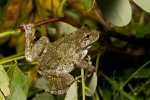 |
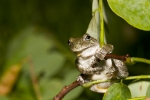 |
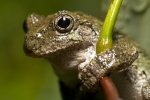 |
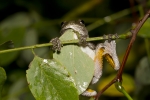 |
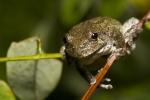 |
 |
||||
I promise I'll try and get back to posting more regularly. I really want to take advantage of all the wildlife and macro opportunities our new property is allotting me - I just need to get into a better balance of work versus play!
Stay tuned!
- Bill
Balloon Glow: Sneak Peak
ktuli — Thu, 07/24/2014 - 21:41
Had to post this before I head off to bed...
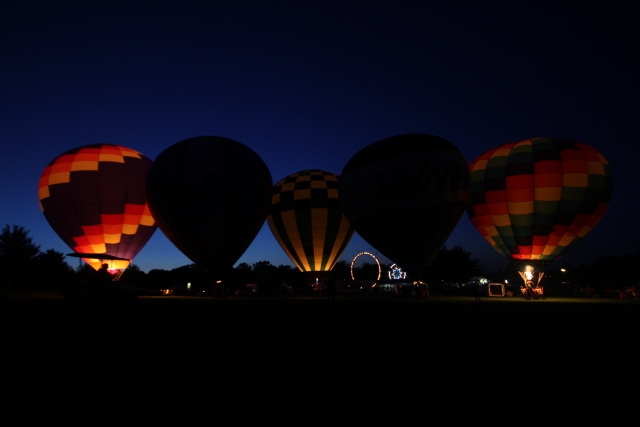
More to come later.
- Bill
Poll: Hummingbird - Flash or No Flash?
ktuli — Wed, 07/23/2014 - 19:29
So here's a couple more shots of one of our hummingbirds (actually, it might be two different ones, but I'm not sure) taken with two different methods. Each one seems to have its own benefits and drawbacks, so I figured I'd put it to a vote... do you like this type of shot better with flash or without? Mouseover the thumbnails for the larger version, then cast your vote below.
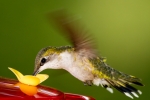 Flash |
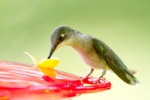 No Flash |
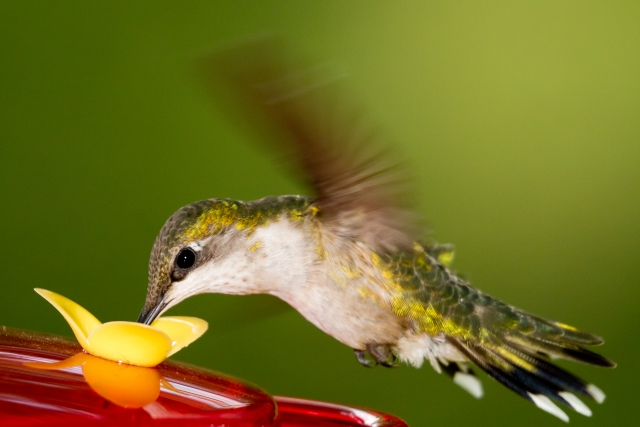 |
|
Technical Data: Canon EOS 7D, Canon EF 100-400mm f/4.5-5.6L IS USM (borrowed) at 400 with Kenko DG Auto Extension Tube (32mm), Flash: 1/1000 sec at f/5.6, ISO 800. No Flash: 1/250 sec at f5.6, ISO 1600. IS On. Canon Speedlight 580EX II flash in eTTL mode RAW conversion in Adobe Camera Raw.
I wish I could have had more similar images to compare, but I never managed to get a good shot of the hummingbird in flight without the flash (actually the flash would startle the hummingbird into flight and so most of those were of it in flight or just taking off). When using the flash, I am able to use high-speed-sync to get a high shutterspeed to freeze motion a bit more and also use a reduced ISO for less digital noise, but I feel it gives the image a bit more harsh look (that could potentially be mitigated with a diffuser that I might have to try next time). Without the flash, the image is given a much more natural look, but exposure becomes trickier. I do get more natural and calmer behavior from the bird without the flash, but with it does give that metallic reflection from the feathers...
So it is all about trade-offs, but which one do you prefer?
Thanks for stopping by!
- Bill
Two Birds with one Lens
ktuli — Tue, 07/22/2014 - 19:43
Well, so much for getting back to a more regular posting schedule...
I did manage to setup Tom's 100-400mm lens recently and got some decent bird photos. These are probably some of the best bird photos I've managed to date, so without any further ado I give you a pretty large bird and a fairly tiny bird, both shot with the same lens but in very different methods.
First up we have a Great Blue Heron (Ardea herodias) - we have these visit our pond with some regularity, but they still remain skittish and any attempt to approach them has proven difficult. This shot I managed from our front porch - I'd thought I used both a 2x and a 1.4x teleconverter on it, but the EXIF info is reporting only the 2x numbers, so I could be mistaken. One interesting thing here is that supposedly I shouldn't have been able to use autofocus for this shot, but I did. The Canon 7D (and most cameras) can only use autofocus is the maximum aperture value is larger than f/5.6. With this lens and any teleconverter, the effective maximum aperture is well above that mark (since the lens itself is f/5.6 and the teleconverters reduce that by 1, 2, or 3 stops if combined). However, putting the camera into live view and using the LCD to zoom in on my subject, I was then able to use AF without any issues at all. I'm sure the results aren't ideal - and that is evident if you look at this image at full size, but it certain had usable results here.
Technical Data: Canon EOS 7D, Canon EF 100-400mm f/4.5-5.6L IS USM (borrowed) at 400 with Canon EF 2x and 1.4x Telephoto Extender II, 1/640 sec at f/11. IS On. ISO 640. RAW conversion in Adobe Camera Raw.
This next one takes that same telephoto lens and uses it in a very different method. Instead of using teleconverters to extend its long distance capabilities, I instead used an extension tube to improve its close distance capabilities. I know the terms are confusing, but perhaps some day I'll write up the differences of teleconverters versus extension tubes, but for now just a quick explanation. Teleconverters are used to magnify the image, they usually come in 2x and 1.4x magnifications; their trade-off is that they reduce the amount of light coming into the camera and effectively make exposure more difficult. Extension Tubes are used to reduce the minimum focusing distance of a lens and by doing so provide a smaller degree of magnification; their trade-off is that they eliminate the lens' ability to focus on items farther away, but they do not affect the amount of light entering the camera.
Anyway, I used the Canon 100-400mm lens with a 32mm extension tube to allow for the lens to focus closer and provide a bit of magnification and pointed it at the hummingbird feeder on our porch. With patience, I managed to get a handful of shots using different methods - I'll share one today and a couple more soon.
Technical Data: Canon EOS 7D, Canon EF 100-400mm f/4.5-5.6L IS USM (borrowed) at 400 with Kenko DG Auto Extension Tube (32mm), 1/400 sec at f/5.6. IS On. ISO 1600. RAW conversion in Adobe Camera Raw.
As you can see, these are slowly improving. I'm happy to be able to start seeing the detail of individual feathers. I'll have to continue working on getting better results, but this is a nice step in the right direction.
- Bill
Scorpionfly
ktuli — Thu, 07/10/2014 - 06:32
Well, if you've been playing along at home, you should recall that we've had pseudoscorpion here previously... so now we have a scorpionfly as well.
Unfortunately this isn't the best image (especially since the depth of field starts to blur out on its namesake scorpion looking tail), but it was the best one I came back with. I'll have to keep an eye out and see if I can locate another one of these and get a better photo next time.
Technical Data: Canon EOS 7D, Canon MP-E 65mm f/2.8 1-5x Macro, 1/120 sec at f/8. Canon Macro Twin Lite MT-24EX in ETTL mode. ISO 100. RAW processing in Adobe Camera Raw.
Doing some quick research revealed that the tail is not a stinger like that of an actual scorpion, but rather the male genitals. Additionally, scorpion flies appear to be predatory, and this one looks like he is in the middle of a meal - let's hope it is a mosquito!
Thanks for stopping by!
- Bill
Playing Catch-up
ktuli — Tue, 07/08/2014 - 19:55
I don't seem to have much motivation to process photos these days, but I finally plowed my way through a huge stack of photos that have been sitting on memory cards waiting to be processed and uploaded. So since it has been almost a month since I've posted anything, I'll just share a big assortment today to get caught up. Perhaps I'll get out and collect some more photos here soon.
Just mouseover the thumbnails for the larger version to be displayed...
 |
 |
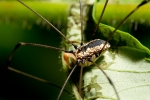 |
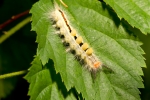 |
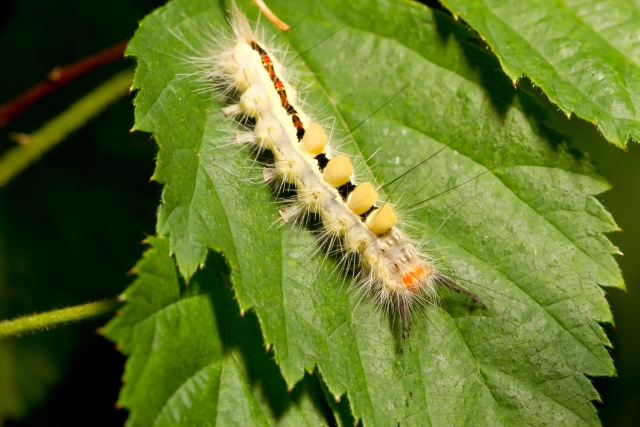 |
|||
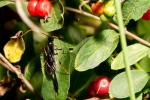 |
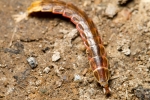 |
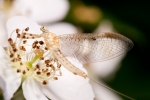 |
 |
And now for some vertical oriented photos:
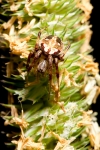 |
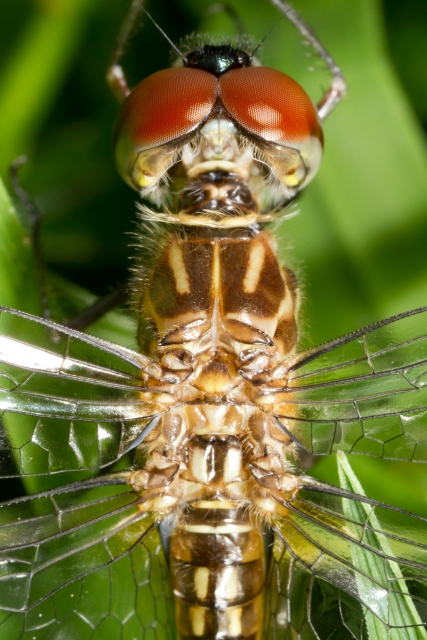 |
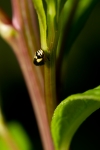 |
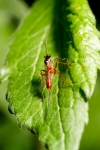 |
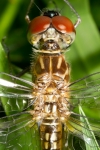 |
|
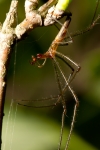 |
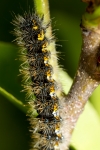 |
Thanks for viewing and hopefully I can get back to a more regular posting schedule here soon.
- Bill

